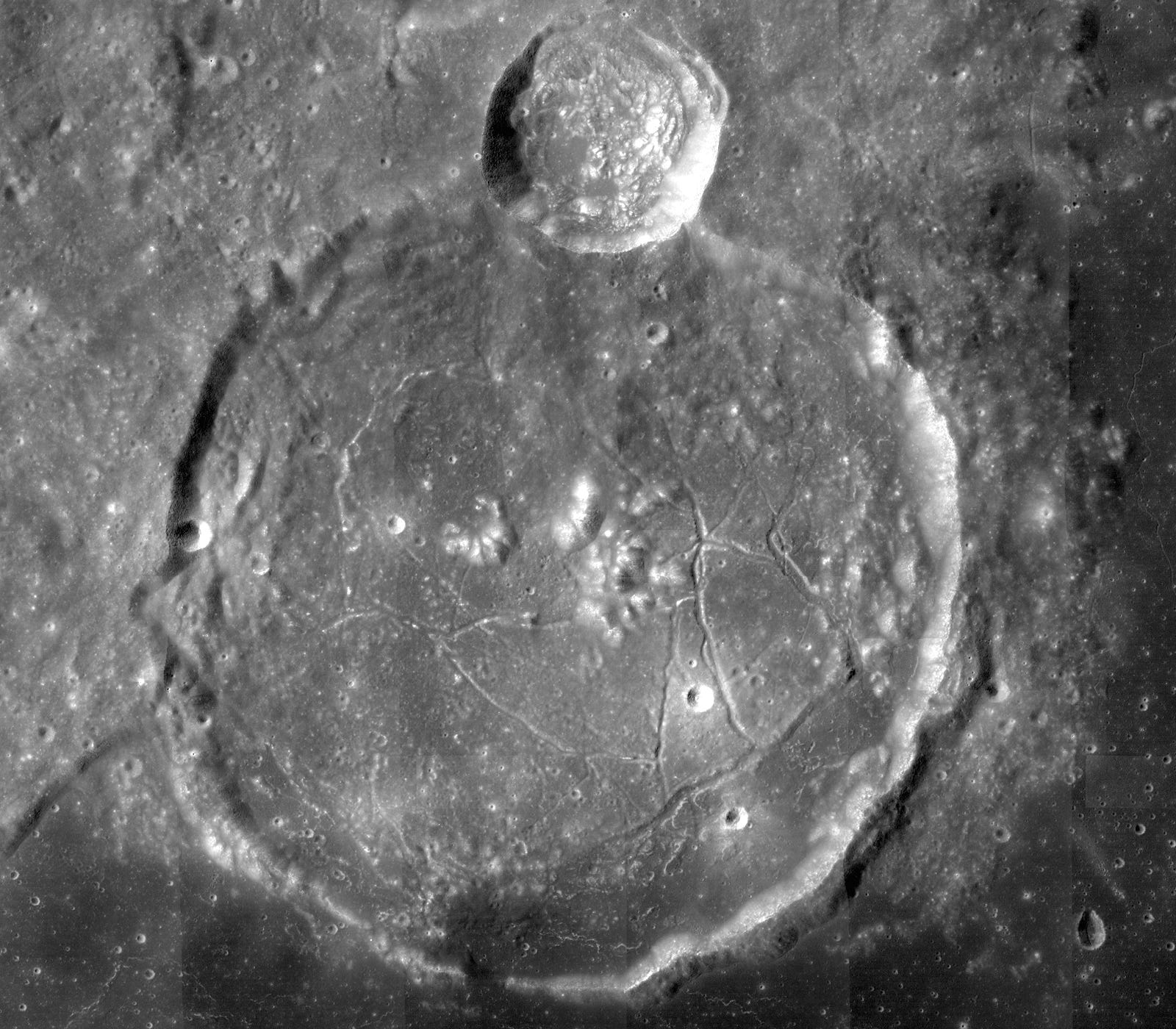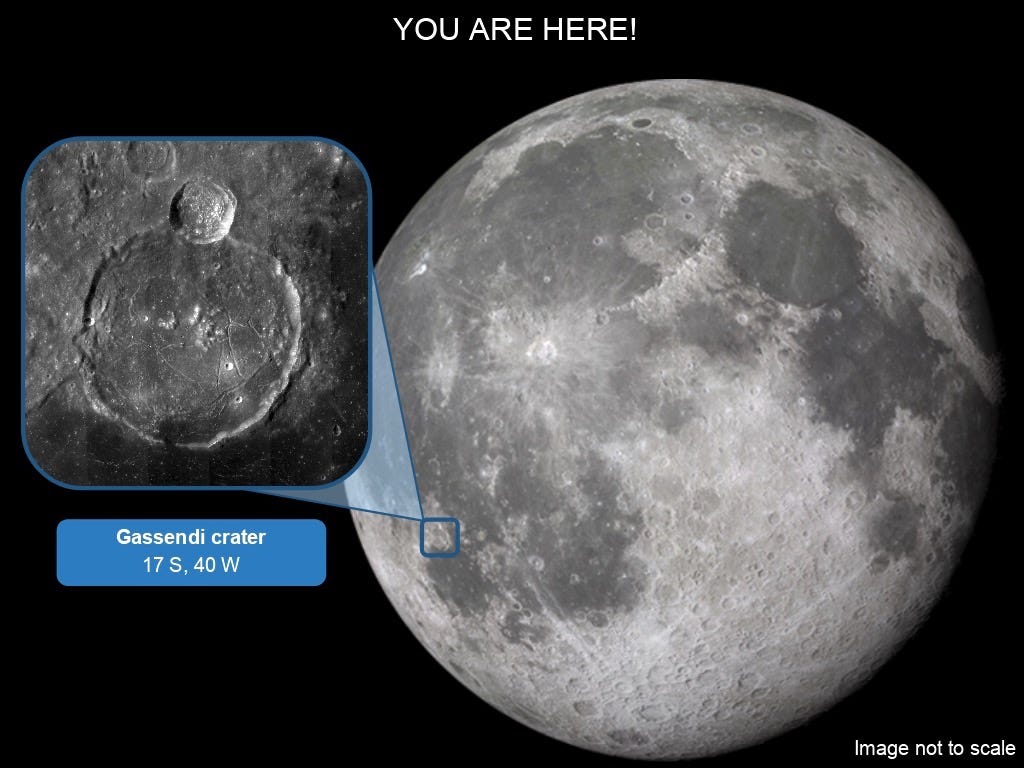Lava filled Gassendi crater with buried mountain bases
A candidate landing site for NASA's Apollo 17 mission.
Seen here is the 110 kilometers wide Gassendi crater, a candidate landing site for NASA's Apollo 17.

Since its formation, Gassendi has been filled with lava, leaving only the central mountains and the crater rim protruding above the surface. Imagine entire mountain bases buried in a now-solidified lava sea! You also see long fractures or rilles laid throughout the crater, possibly a result of the impact that formed Gassendi.

Notice carefully and you will see that the crater's rim height lowers as you go southwards, indicating a titled crater formation. However, since the southernmost part of the rim doesn't go below the surface, the question is where did the lava in the crater come from? Did it overflow from the lava pool just below the crater or did the fractures within the crater let magma from beneath the surface through?
Gassendi was a candidate landing site for NASA's Apollo 17 mission, with a major scientific goal of sampling the ancient lunar rock material of the central mountains. Alas, engineering constraints, particularly lack of high-resolution imagery, meant that a successful landing maybe difficult and the site was dropped in favor of Taurus-Littrow valley.
With the availability of high resolution images from NASA's Lunar Reconnaissance Orbiter (LRO), a landing mission to Gassendi is now feasible. The evolutionary history of the Moon awaits at Gassendi.

